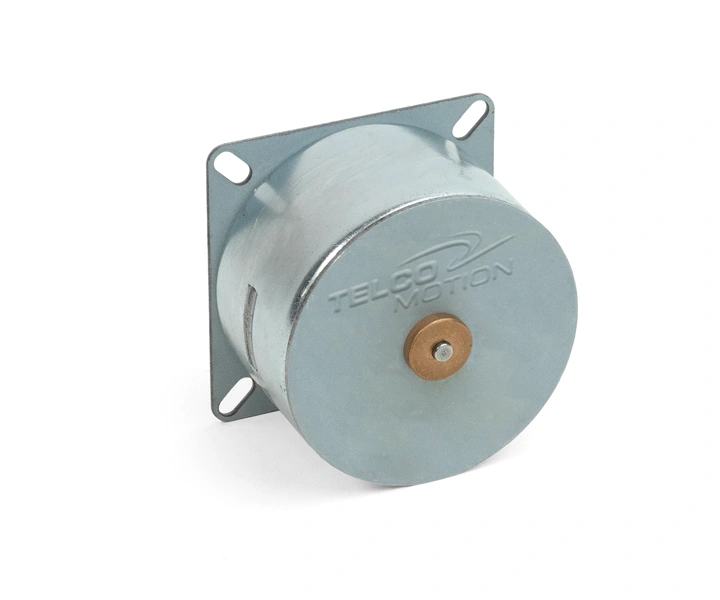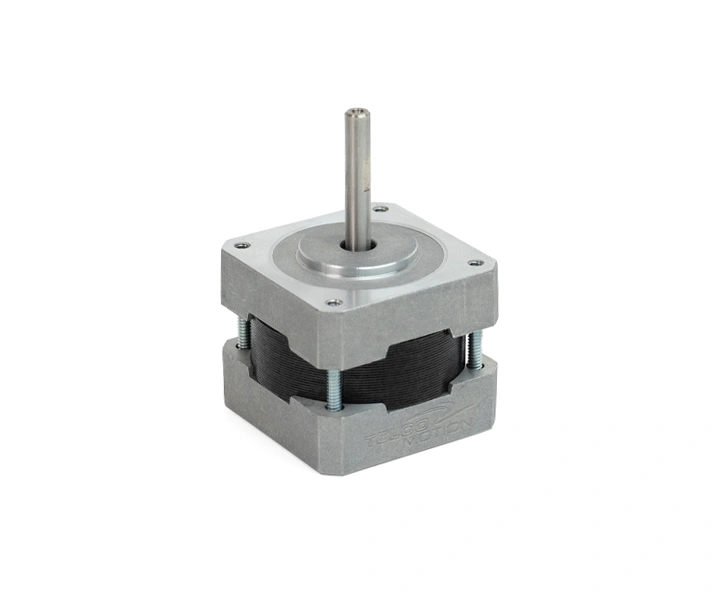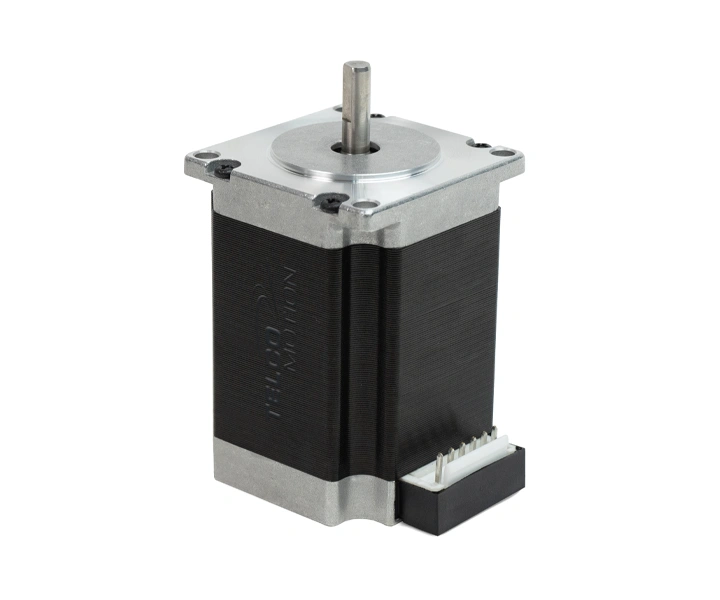Home > Stepper Motors
Stepper Motors
Stepper motors hold an important place in the world of motion control. Their unique designs enable engineers to create reliable machines that can perform complex motions with a high degree of precision. From 3D printers and CNC machines to industrial robots and car manufacturing, stepper motors are versatile and powerful tools across various industries.
TelcoMotion is a top manufacturer of stepper motors. We’re proud to offer a wide variety of reliable and high-performance products to suit your specific needs. Our solutions are backed by 40 years of experience and a reputation for excellence.
Read below for more information about the stepper motors we offer and the benefits they provide.
Products

PM Stepper Motors
Experience the perfect balance of power, speed, and accuracy with our PM stepper motors. A high torque-to-volume ratio makes them ideal for tight space and weight constraints applications.

High Torque Stepper Motors
High torque stepper motors are designed with strong magnets and large rotor windings. They provide exceptional torque performance, even in the most demanding of applications.

Hybrid Stepper Motors
High torque stepper motors are designed with strong magnets and large rotor windings. They provide exceptional torque performance, even in the most demanding of applications.
Why Choose TelcoMotion to Supply Your Stepper Motors?
Stepper motors play a fundamental role in machines and moving parts of all kinds. Their systems offer a level of precision control that’s hard to beat – not to mention their power and versatility.
At TelcoMotion, our stepper motors are known for their top quality, high reliability, innovation, and advanced technology. They are designed to run smoothly with low noise, low vibration, and high torque.
All of Telco’s stepper motors are the result of years of experience and expertise in the field. We craft our motors with reliable materials and the latest technologies, ensuring you get the very best in quality and performance.
Applications
Our stepper motors are an asset to consumer electronics manufacturers, relied on for everything from floppy disk drives and flatbed scanners to video game consoles.
Being ultra-precise and easy to control, TelcoMotion’s stepper motors deliver a lot of value in additive manufacturing. From industrial-grade 3D printers to smaller models owned by hobbyists, they ensure every layer of a given design is laid as intended.
Systems like CT and MRI scanners work by carefully and incrementally scanning the body. Our stepper motors are perfect for this, as they can precisely shift at various angles and speeds with minimal effort.
Robots are becoming increasingly prevalent in a variety of industries, from manufacturing to household cleaning. Telco stepper motors help these machines navigate their environment, move materials from one place to another, and operate with precision.
Stepper Motors FAQ
If you need more information about stepper motors, we’ve got you covered with these FAQs.
What is a stepper motor?
A stepper motor is a type of DC brushless motor that converts electrical pulses into discrete mechanical movements. It consists of a rotor and stator, which use magnetic fields to move the rotor in small step angles.
Because of their ability to accurately control motion, stepper motors are popular in precision applications such as 3D printing, machine tools, robotics, and medical equipment. They offer precise positioning control and can be used in open or closed-loop systems.
Stepper motors are available in a variety of sizes and motor currents. They may be analog or digital – sensorless brushless motors or sensor-controlled brushless motor systems.
How does a stepper motor work?
A stepper motor phase works by converting electrical pulses into mechanical movement. When an electric current is applied to the motor’s stator coils, the rotor advances in steps, according to the number of pulses given. Each pulse causes the rotor to move a certain distance and then stop at its new position. This process is repeated until the desired motion has been achieved. When power is removed from the motor, the rotor stays at its current holding torque and position unless another pulse is applied.
Are there different types of stepper motors?
Stepper motors can come in multiple configurations. Read the list below for more details on each of the most popular.
- Unipolar Stepper Motors: This type of stepper motor utilizes a six-wire interface, allowing for a center tap within each of the windings within the motor. This allows for higher precision control of the motor across the speed range. This interface can be available in any stepper technology.
- Bipolar Stepper Motors: This type of stepper motor utilizes a four-wire interface, enabling efficient control of the stepper motor. This is the most common interface for stepper motors, whether PM steppers, hybrid steppers, or high torque steppers.
- Permanent Magnet Stepper Motors: These systems’ rotors are constructed with permanent magnets that interact with the electromagnets of the stator to generate rotation and maximum torque.
- Hybrid and High Torque Stepper Motors: Hybrid steppers feature permanent magnets on their rotors and have specially energized windings that produce higher torque than other stepper motor types. This type of motor is used for applications requiring very high accuracy levels.
Where are stepper motors used?
Stepper motors are often used in applications that require precise motion control and positioning. These BLDC motor applications are many – 3D printers, robotic arms, and computer numerical control (CNC) machines, to name a few.
They are also popular for driving kinematic mechanism assemblies used in car manufacturing, pick and place machines, packaging machinery, labeling equipment, and industrial printing presses.
What’s the difference between servo motors and stepper motors?
Servo motors and DC stepper motors are two types of electromechanical devices used to drive or control motion in a wide variety of applications. The primary difference between servo and stepper motors is the way in which they generate torque. Servo motors and coreless DC motors rely on feedback from an encoder or other sensors to accurately measure and control rotor position.
On the other hand, step motors use digital motor controls to generate pulses that move their rotor in incremental steps, allowing for precise motion without needing feedback.
Let’s Work Together
Why settle for less? Put Telco’s motion control and supply chain experts to work on your next project.
Technical Questions?
Whether you need more efficient solutions or engineering innovation, our engineers are up to any challenge.